NSDL CAS – When it comes to investment, investors may face issues of tracking and consolidating folios especially direct mutual funds and equity investments. We use multiple platforms such as MyCAMS, websites of respective mutual funds, and websites of trading and demat account providers. This problem can be solved by NSDL CAS.
NSDL CAS is a single statement of all your investments in your e-mail. It is also known as a consolidated account statement or e-CAS. This statement is provided by NSDL.
NSDL CAS includes investments in equity shares, preference shares, mutual funds units, sovereign gold bonds, corporate bonds, debentures, securitized instruments, money market instruments, and government securities held in Demat. It also includes details of your investment in mutual fund units which are kept in statement or folio form with different mutual fund companies.
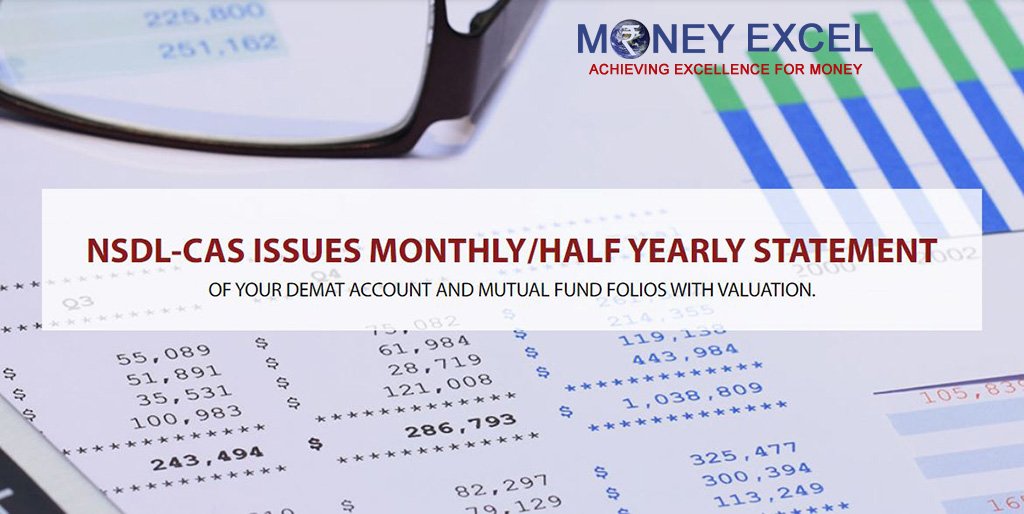
What is NSDL Consolidated Account Statement (CAS)?
NSDL CAS is a single account statement consisting of transactions and holdings in an investor’s demat account(s) held with NSDL and CDSL as well as in units of Mutual Funds held in Statement of Account (SOA) form.
In short, it is a statement that contains details of all your investment in a single place along with their market value. NSDL CAS provides details in a graphical format including pie charts and tables so that it can be read easily. It also gives a detailed summary of all your investments across various asset classes. You can get monthly, half-yearly, or yearly statements in your e-mail account.
Benefits of NSDL CAS
- Single statement for all of your investments in the securities market.
- Easy tracking of your investment portfolio.
- Statement Contains monthly movement of consolidated portfolio value.
- Easy monitoring of the investment value and portfolio composition.
- Help to develop your strategy to manage your investments better.
- Graphical representation for easy understanding.
- Password Protected Statement.
How to Download Your NSDL CAS Statement?
Step 1 Visit the NSDL e-Services IDeAS Login Page. Open your web browser and visit – https://eservices.nsdl.com/ select IDeAS section and click on the Login page link. You should be able to see the login screen.
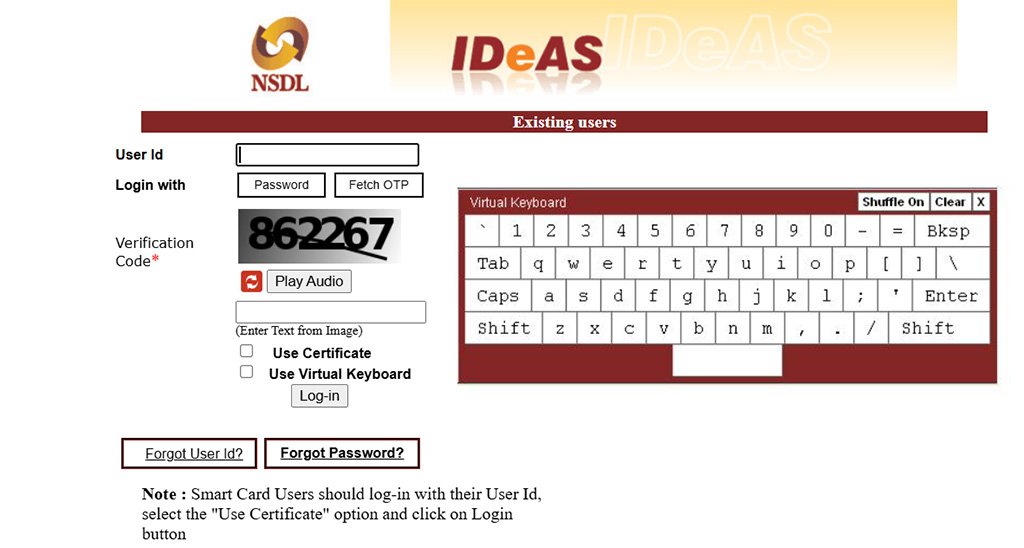
Step 2 Enter your User ID and Password. It also allows you to log in via OTP. You need to enter the verification code and click on the login button. In case you have not registered you need to register once by providing your DP ID, Client ID, and Mobile Number.
Step 3 Once you log in, you can see the main dashboard. Now in the left navigation tab, you will be able to see options of Subscribe for eCAS and View/Download eCAS. Click on the View/Download eCAS option.
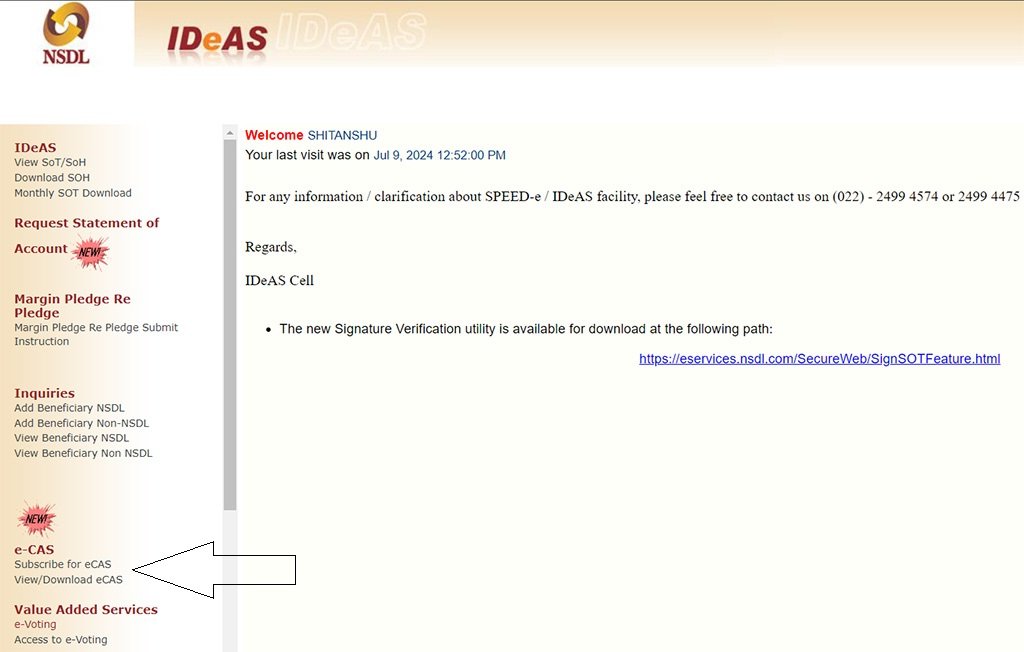
Step 4 Now you can select the month and year for which you want to download the statement. You can click on View eCAS to view the statement. You need to enter the password (your PAN card Number) to open the statement. You can also download the statement in PDF format.
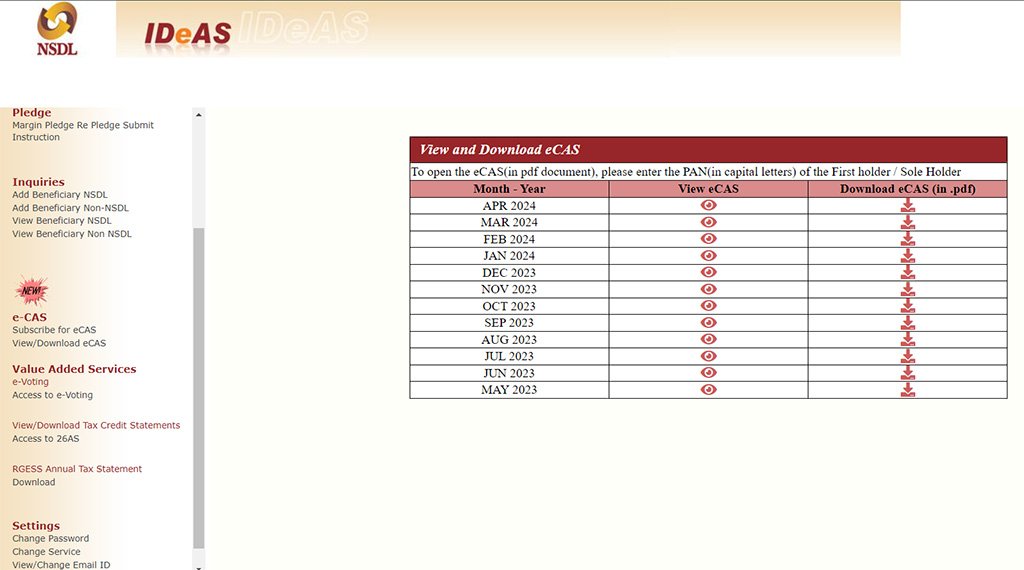
You can also see SoT (Statement of Transaction) and SoH (Statement of Holding) from this portal.
How to Track Your NSDL eCAS?
Step 1 Visit: https://nsdlcas.nsdl.com/
Step 2 Click on the NSDL e-CAS menu appearing on the Top Menu bar. Now you need to input your CAS ID and PAN card details in the form. Input the correct captcha code and press the Submit button. Now you will get your e-CAS on your registered E-mail ID regularly.
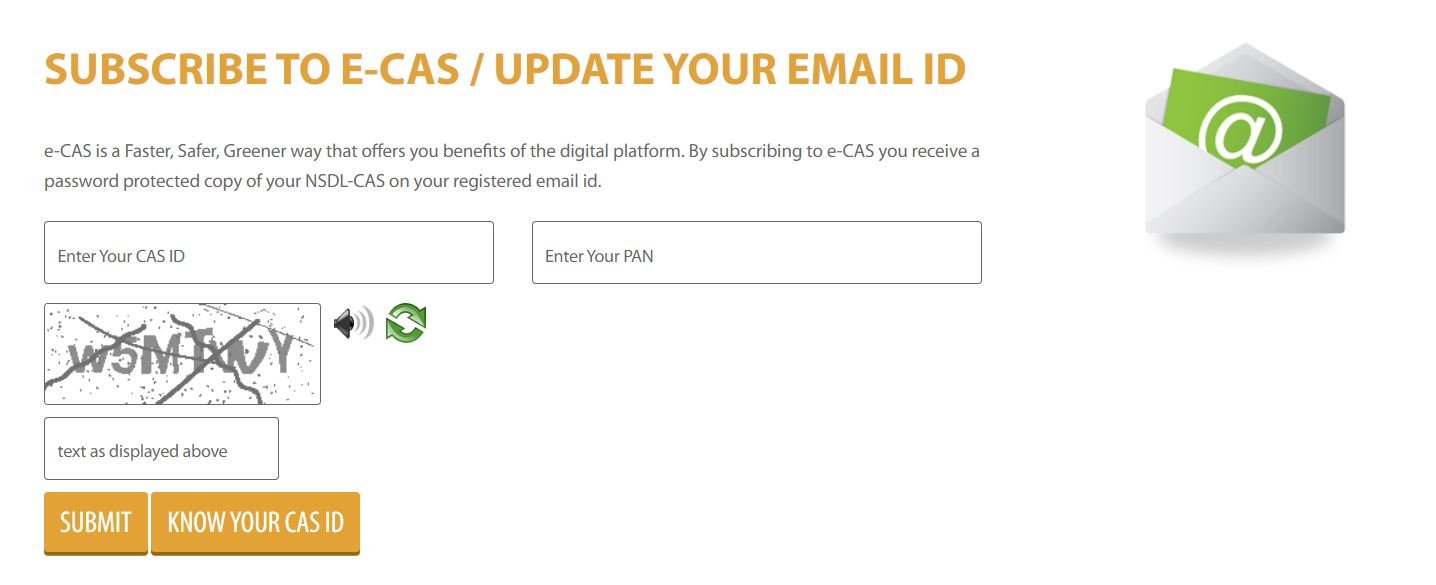
If you don’t know your CAS ID you need to click on the button ‘Know your CAS ID’
Step 3 On clicking the button ‘Know your CAS ID‘ one popup window appears. You need to put your PAN Card number (1st holder PAN card number), DP name & ID, and Client ID. After putting the correct captcha you need to press submit button to get your CAS ID. CAS ID is 9 digit ID allocated by NSDL.
Step 4 Once you know your CAS ID you can get access to e-CAS of a particular month and year. In order to do so, click on ‘Track Your CAS‘ from the Top menu bar. You will be taken to the section where you need to click on the button ‘Click Here’ to track your CAS. Now you need to put your CAS ID, PAN, registered E-mail ID, and the month/year e-CAS you want. After entering Captcha you need to click on the submit button and e-CAS will be mailed.
FAQ
When will I get e-CAS via e-mail?
As per SEBI guidelines, if there is any transaction in any of the demat accounts of an investor or any of his/her mutual fund folios, then CAS will be sent to the investor in the next month regarding transactions executed in a previous month along with the holdings. Hence, if the investor has done transaction(s) in every month, then he/she will get CAS every month. However, in case there is no transaction in any of the mutual fund’s folios and demat accounts in any month of the year, then CAS withholding details will be sent to the investor on a half-yearly basis.
Which Asset Classes are included in NSDL CAS?
NSDL CAS includes asset classes such as Equities, Warrants, Preference Shares, Mutual Fund units held in demat form, Corporate Bonds, Money Market Instruments, Securitized Instruments, Government Securities, Postal Saving Schemes held in demat form, MF units held in SOA form in Mutual Fund Folios, etc.
If I have multiple Demat accounts which depository CAS would be sent?
In case investors have multiple demat accounts across the two depositories (i.e. with NSDL and CDSL), the depository having the demat account which has been opened earlier shall be the default depository. Investors can ask NSDL or CDSL to make changes to the default depository.
Final Words
I recommend using NSDL CAS – Consolidated Account Statement For tracking your investment.






